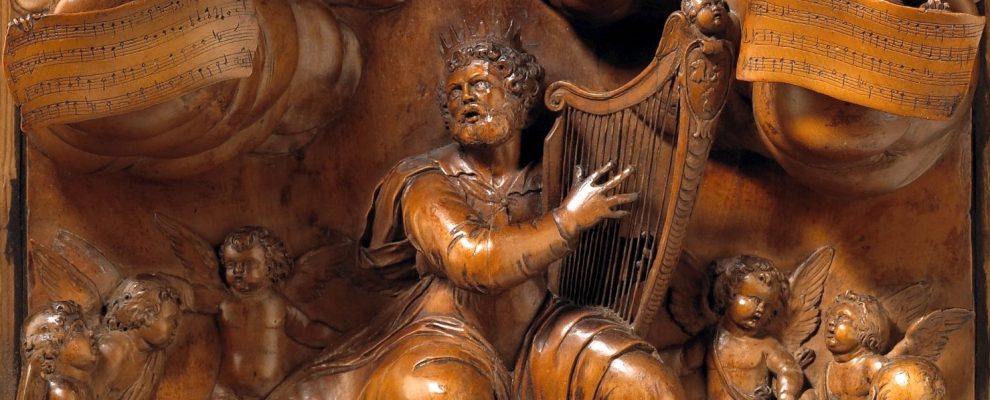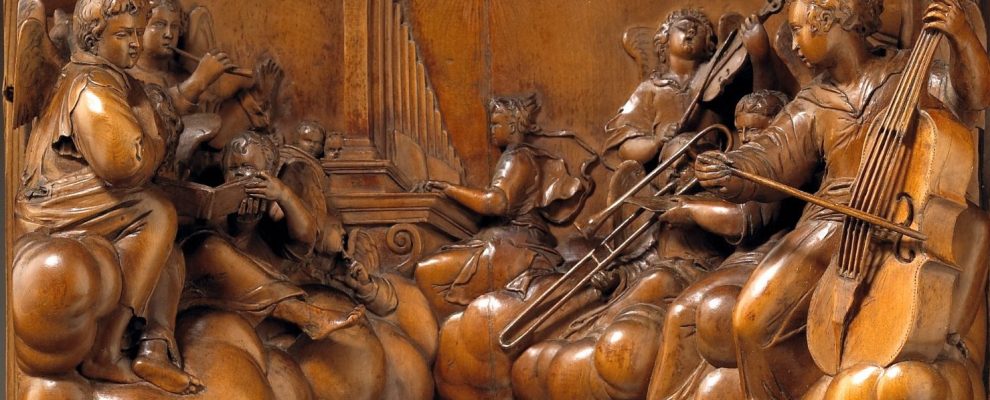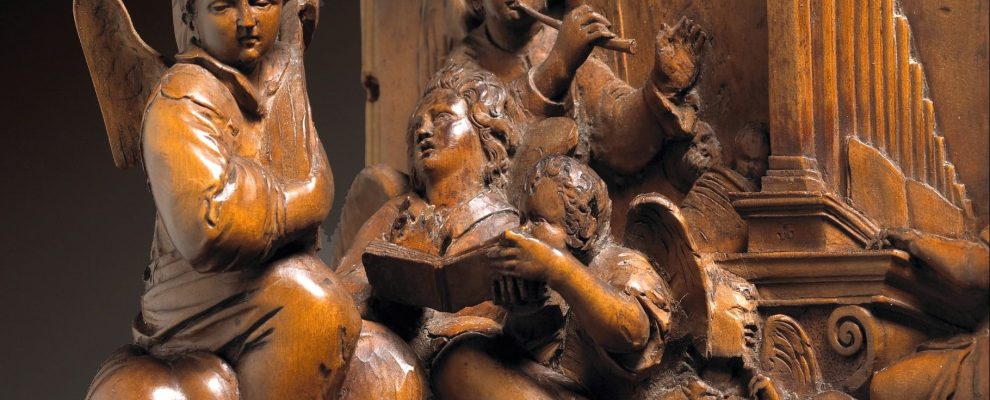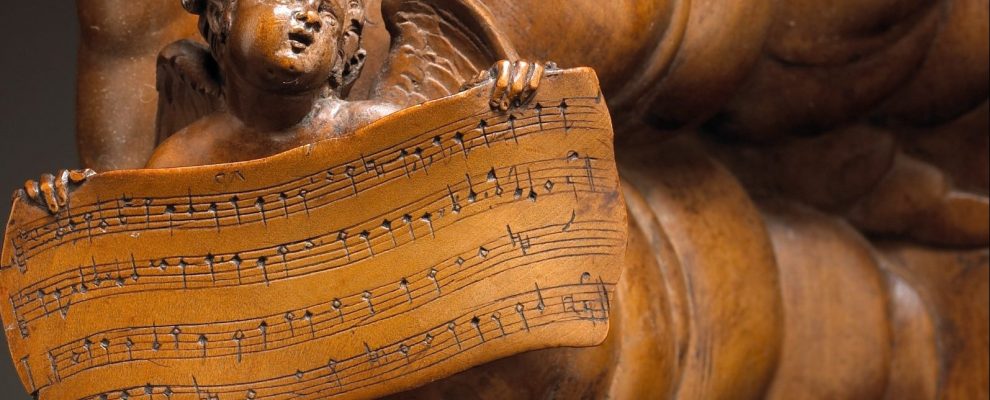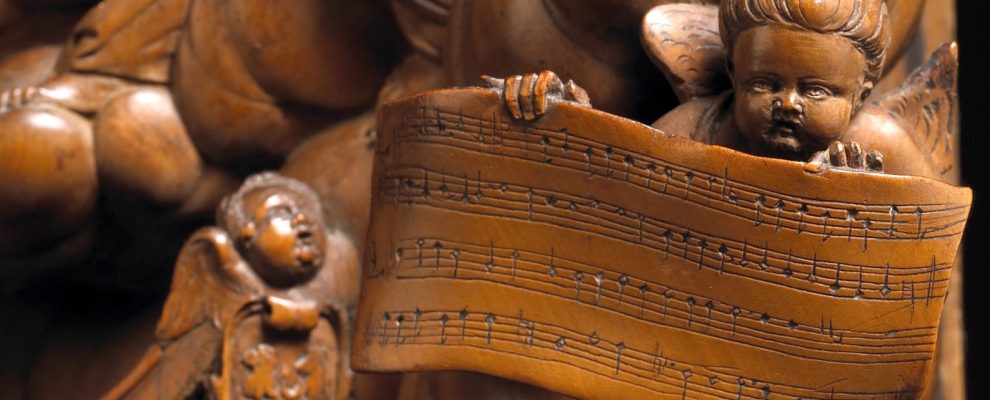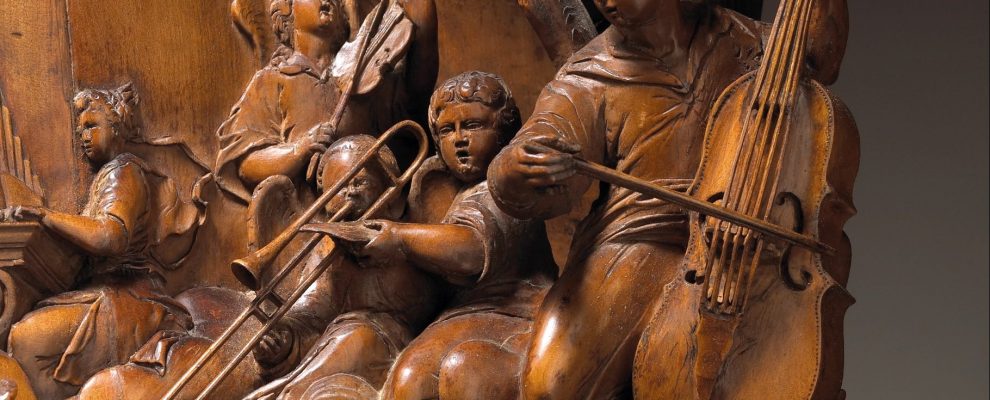Exploring the King David Panel
Measuring just 37cm x 24cm, the King David panel is a high relief sculpture, meaning that Gibbons’ carved forms and figures project very deeply from the background. Made from boxwood, the panel was seamed together from two pieces of wood to give Gibbons sufficient depth to create the three-dimensional sculpture.
This narrative panel is copied from Peter Candid’s c1589-93 painting The Performance of a Motet of Orlando di Lasso, which Gibbon’s would have known via Johannes Sadeler’s (1550-1600) engraving after the work, showing his familiarity with and inspiration by continental sources. It also heralds Gibbons’ own love of music which went on to be amplified in his later works.
The painting and print is based on Psalms 148 and 150, and depict a visionary concert led by King David, playing a harp and ringed by dancing cherubs. Above David, in the heavenly realms, angelic musicians are accompanied by St Cecilia, the patron saint of music. The panel features and array of musical instruments from an organ to a viola di gamba as well of course as David’s own harp. The music being played, held up for viewers to see by flying cherubs, is a motet by Orlando di Lasso.
As pointed out by David Esterley (the leading authority on Gibbons’ work and curator of the V&A’s 2000 exhibition), the panel almost certainly was originally finished with a further ring of cherubs encircling King David at the foot. Faint traces can still be seen where the three putti would have ajoined the panel, and Sadelers’ engraving shows how the completed panel would have looked.
The size and subject matter of the panel suggest that it was likely made to adorn an organ case in a church or chapel. A beautiful window by the famous painted glass artist Henry Gyles of the identical image of King David at St Helen’s Church at Denton (commissioned by Thomas Fairfax, 5th Lord Fairfax) gives the biggest clue to the connections and relationships between Gibbons, Gyles and the Fairfax family.
In many ways, it also pre-figures another narrative relief, the now famous ‘Crucifixion after Tintoretto’ (1671) with which John Evelyn was so captivated. Although carved in limewood the Crucifixion stylistically bears close affinity to the King David panel. The Crucifixion panel also underscores the sculptor’s use of engravings as the basis for some of his early compositions.
The King David panel offers a crucial and unique visual documentation of Gibbon’s emerging style, influences and talent, which when taken in conjunction the Crucifixion, create a sample of his early narrative work that provides a vital piece in the jigsaw in understanding his development as arguably England’s greatest carver.

